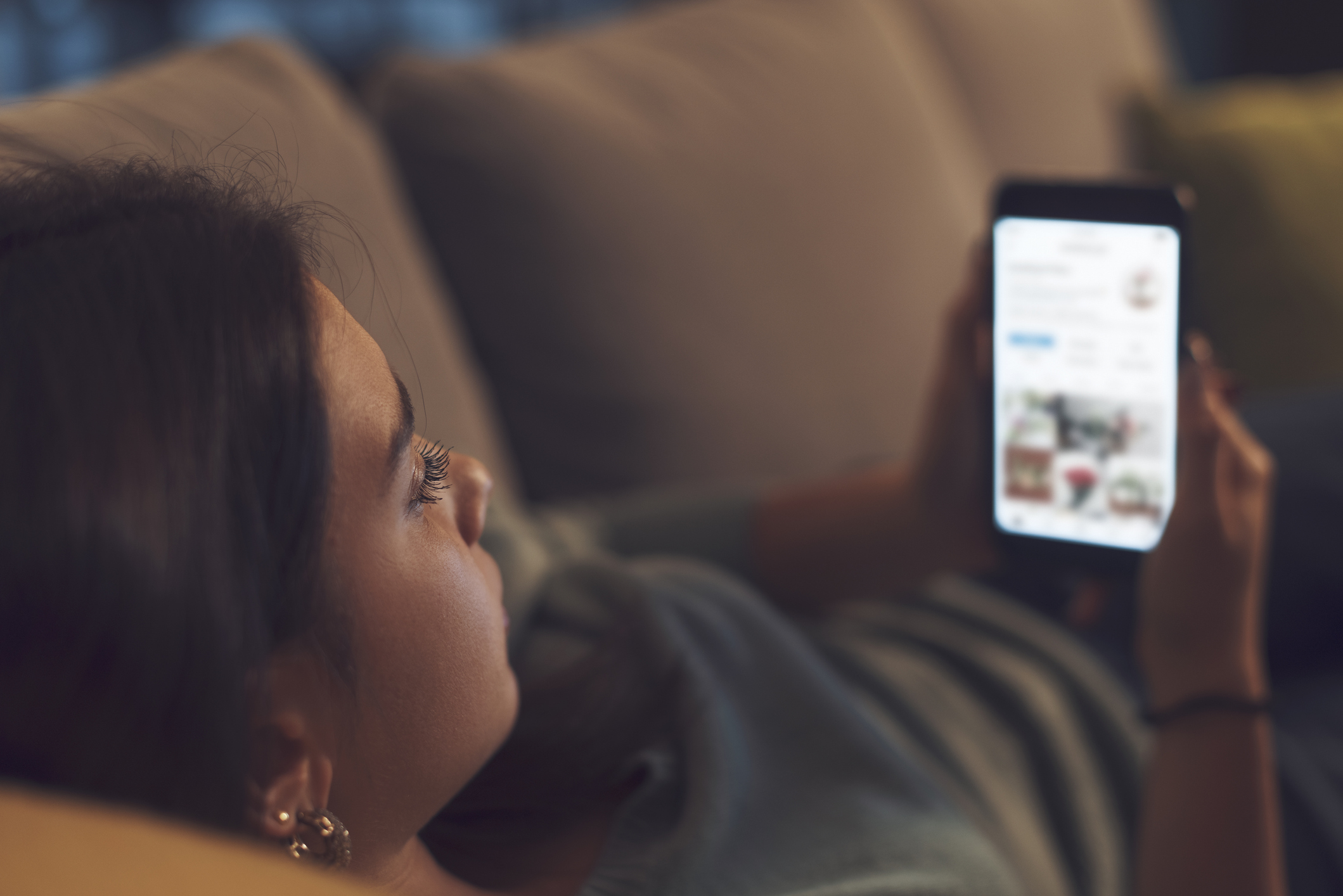SPH Panel Discusses How to Share Health News in Era of Misinformation.

SPH Panel Discusses How to Share Health News in Era of Misinformation
During an SPH Public Health Conversation on November 12, communication scholars explored how public health experts can leverage social media platforms to communicate reliable health news to the public amid growing distrust in government and science.
The average person spends 2.5 hours per day on social media and, for adolescents, that daily total nearly doubles. That’s a lot of time to be exposed to the health misinformation that continues to run rampant on TikTok, Instagram, Facebook, and other social networking apps, which have overtaken television to become the top way Americans consume news.
Thinking about and engaging more critically with the content one consumes could tamper this widespread consumption of misinformation, but today’s digital landscape of constant notifications and continuous scrolling keeps users trapped in a fast-moving cycle with no time for fact-checking or critical discourse, said panelists at a School of Public Health event on Wednesday, November 12.
Cohosted with the College of Communication (COM) and SPH’s Public Health Post (PHP), the online Public Health Conversation, “Public Health and New Media: Modes of Persuasion,” drew more than 550 viewers as communication scholars discussed ways that public health professionals and other health leaders can communicate accurate and trustworthy health information in an era of online misinformation and distrust in scientists, doctors, and the federal government. The conversation was moderated by Monica Wang, associate professor of community health sciences and executive editor of PHP.
In combating health misinformation online, health experts “are not just competing for attention—we’re competing for cognitive depth in an ecosystem that’s optimized for distraction,” said panelist Traci Hong, professor of media science at COM. The “fast-thinking” mode that people embrace in social media engagement “is emotional, automatic, and intuitive judgment,” Hong says. “It’s very efficient in everyday life, but it doesn’t leave much space for reflection and deliberation, or what we call ‘deep thinking.’ In a lot of ways, that is why misinformation proliferates.”
It’s important to remember that all human beings are susceptible to some level of cognitive and implicit biases—including the most knowledgeable and well-meaning health professionals, said panelist Sherry Pagoto, professor and director of the University of Connecticut Center for mHealth & Social Media. Confirmation bias, the act of believing information that is consistent with held beliefs; the bandwagon effect, when we believe information that others with similar beliefs support; illusory bias, or when we believe something that is repeated over and over again; and partisan bias, which is believing information that reflects one’s political beliefs—all create the potential for people to interpret and spread inaccurate information.
“No matter who you are and how much education you have, we’re all vulnerable to misinformation,” Pagoto said.
Social media algorithms also amplify these biases by reinforcing beliefs by ensuring users view predetermined content that aligns with their established interests, she adds—a strategy that only increases the opportunity for misinformation to spread after Meta, and other major social media platforms scaled back their content moderation policies.
Public health professionals can navigate these challenges by making a concerted effort to empathize with people and learn their values, she says. “We tend to want to focus on debunking facts, but I think there’s something to be said for thinking about the values of the populations whose minds we want to change. There are a lot of communities that have not been respected by science, and so they are skeptical of expert consensus and mandates. It may be better to spend our conversations learning about others’ values, rather than trying to change their minds.”
Still, in order to quell inaccurate or harmful beliefs about health-related topics, health experts can and should identify and amplify credible sources when communicating about public health, said panelist Jeff Niederdeppe, senior associate dean of faculty and research in the Jeb E. Brooks School of Public Policy and Liberty Hyde Bailey Professor at Cornell University.
“We always have to compete with well-funded oppositional forces, whether they’re selling products or representing powerful interests, and they’re often able to outspend public health,” Niederdeppe said. “We also need to create opportunities for exchange and feedback on messaging—we can’t just put our messages out there and hope they land.”
When the conversation turned to navigating health information fatigue on social media, he drew a distinction between information overload and consistent messaging.
“I don’t know that we’ve reached a level of fatigue on public health topics…I think we are often out-exposed by competing interests,” said Niederdeppe. “Whatever side of the political coin you land on, the political right is very good at repeating the same talking points in a consistent manner in lots of different places.” That’s not to say people aren’t fatigued by a public health communicator assuming or demanding that people prioritize their health over everything else in life all of the time, he adds. “Health matters to people, but so does eating tasty food, and spending time with friends. But consistent messaging that reaches audiences repeatedly in lots of different contexts is actually beneficial for public health communication.”
These contexts include both in-person and digital efforts to relay health information, from collaborating strategically with social media influencers, to interacting with local community leaders who are already trusted and familiar sources, to harnessing artificial intelligence tools to develop interactive data dashboards that enable the public to engage more personally with health information. These strategies, the panelists said, will not only increase consumption of accurate and health-protective data, but also foster more positive emotions and attitudes, particularly in the social media space that is too often rife with negative interactions.
“I hope that ‘hope-scrolling’ becomes the word of 2026,” Pagoto said.